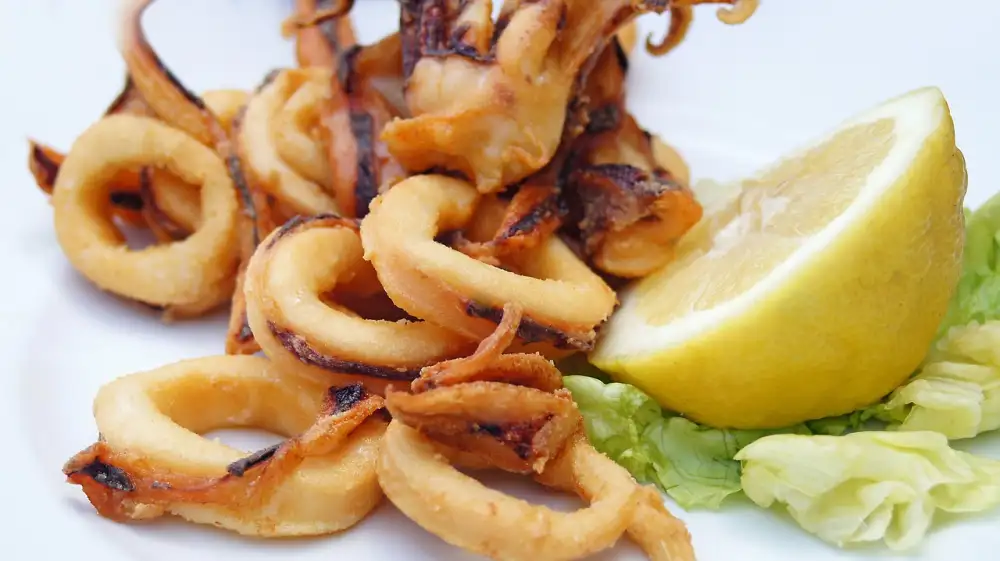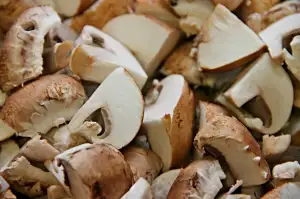Unraveling the Delights of Calamari: Exploring the Exquisite Dish Made from Squid

- Explanation of calamari being made from squid
- Overview of the different cooking methods for calamari
- Discussion on the various culinary cultures that feature calamari in their cuisine
- Highlighting the versatility of calamari in different recipes and dishes
- Exploring the nutritional benefits of calamari
- Tips for selecting and preparing calamari for cooking
Calamari, a beloved seafood dish, has captured the hearts and palates of food enthusiasts around the world. With its tender texture and delicate flavor, calamari offers a unique culinary experience that is hard to resist. Whether enjoyed as an appetizer, main course, or even in salads and pasta dishes, calamari has become a staple in many cuisines. Join us as we unravel the delights of this exquisite dish made from squid and explore the various ways it can be prepared to tantalize your taste buds.
Explanation of calamari being made from squid
Calamari, a beloved seafood delicacy, is a dish that has captured the hearts and palates of food enthusiasts around the world. But what exactly is calamari? Contrary to popular belief, calamari is not a type of fish or shellfish. It is, in fact, made from squid.
Squid, a cephalopod mollusk with a soft body and elongated tentacles, is the main ingredient used to create this exquisite dish. The squid's meaty body and tender texture make it ideal for cooking in various ways.
The process of transforming squid into calamari involves cleaning and preparing the squid before it can be cooked. The squid's internal organs are removed, leaving behind only the meaty part. This meat is then sliced into rings or strips, giving it its distinctive shape.
The resulting calamari can be enjoyed in many different forms - fried, grilled, sautéed or even served raw as part of sushi dishes. Each cooking method brings out unique flavors and textures in the calamari, making it a versatile ingredient that can be adapted to suit various culinary preferences.
Whether it's the crispy golden rings of fried calamari served as an appetizer or the tender grilled calamari tossed in a zesty salad, this dish has found its way into numerous culinary cultures across the globe.
From Mediterranean cuisines like Italian and Greek to Asian cuisines like Japanese and Thai, calamari has become an integral part of many traditional recipes. Its ability to absorb flavors from spices and sauces makes it a favorite ingredient for chefs looking to add depth and complexity to their dishes.
Apart from its culinary appeal, calamari also offers several nutritional benefits. It is low in fat and calories while being rich in protein and essential minerals such as iron and zinc. Additionally, it contains omega-3 fatty acids that promote heart health.
When selecting calamari for cooking, look for fresh specimens with firm, translucent flesh. Avoid those with a fishy odor or slimy texture. To prepare calamari, it is important to clean it thoroughly by removing the beak and ink sac.
In conclusion, calamari is not just a dish; it is an expression of love and passion for food. Its unique taste, versatility in cooking methods, and presence in various culinary cultures make it a true delight for seafood enthusiasts. So next time you savor a plate of calamari, remember the artistry and devotion that goes into creating this exquisite dish.
Overview of the different cooking methods for calamari
Calamari, a popular seafood dish, offers a wide array of cooking methods that enhance its unique flavor and texture. From crispy fried calamari rings to tender grilled calamari steaks, the possibilities are endless. Other popular cooking techniques include sautéing, baking, and even stuffing calamari with delicious fillings. Each method brings out different nuances in the squid's delicate taste, allowing chefs to create diverse and delectable dishes that cater to various palates. Whether you prefer it lightly seasoned or infused with bold flavors, calamari offers a culinary adventure for seafood enthusiasts.
Discussion on the various culinary cultures that feature calamari in their cuisine
Calamari, the delectable seafood dish made from squid, has found its way into the culinary cultures of various regions around the world. From Mediterranean countries like Italy and Greece to Asian nations such as Japan and Thailand, calamari holds a prominent place on their menus.
In Mediterranean cuisine, calamari is often prepared in a simple yet flavorful manner. In Italy, it is commonly served as fried rings or stuffed with breadcrumbs and herbs. In Greece, calamari is marinated in lemon juice and olive oil before being grilled to perfection.
Asian cultures have also embraced calamari in their culinary traditions. In Japan, it is a popular ingredient in sushi and sashimi dishes. The delicate texture of squid pairs perfectly with the subtle flavors of soy sauce and wasabi. In Thailand, calamari features prominently in spicy stir-fries and tangy salads.
Even beyond these regions, calamari has made its mark on global cuisine. In America, it is commonly enjoyed as deep-fried appetizers or incorporated into pasta dishes. In Spain, calamari is a key component of traditional paella recipes.
The versatility of calamari allows it to adapt to different cooking styles and flavor profiles, making it a beloved ingredient across diverse culinary cultures. Whether it's lightly battered and fried or marinated in zesty sauces, calamari adds a unique touch to any dish.
Exploring the world of calamari opens up a world of flavors and textures that truly showcase the love for food found within different cultures. It serves as a testament to how a simple ingredient can be transformed into an exquisite dish that brings people together around the table to savor every bite.
Highlighting the versatility of calamari in different recipes and dishes
Calamari, with its tender and succulent texture, is a versatile ingredient that can be used in a myriad of recipes and dishes. Its mild flavor allows it to easily absorb the flavors of various seasonings and marinades, making it a perfect canvas for culinary creativity.
One popular way to enjoy calamari is by frying it to perfection. The crispy exterior contrasts beautifully with the tender flesh inside, creating a delightful combination of textures. Calamari rings are often served as an appetizer or as part of a seafood platter, accompanied by tangy dipping sauces like aioli or marinara.
Another delicious option is to grill calamari. This method imparts a smoky flavor while maintaining its natural tenderness. Grilled calamari can be served on its own as a main course or added to salads, pasta dishes, or even tacos for an extra burst of flavor.
For those looking for a lighter alternative, calamari can also be steamed or sautéed. These cooking methods preserve the delicate taste and texture of the squid while allowing it to shine in simple yet elegant preparations. Steamed calamari pairs well with fresh herbs and light citrus dressings, while sautéed calamari can be tossed with garlic, chili flakes, and lemon juice for a zesty kick.
In addition to these classic preparations, calamari can also be incorporated into stir-fries, stews, soups, and even sushi rolls. Its versatility knows no bounds when it comes to culinary experimentation.
Whether grilled, fried, steamed, or sautéed – calamari has the ability to elevate any dish it graces. From Mediterranean-inspired pasta dishes to Asian-inspired stir-fries and everything in between, this delectable seafood delicacy adds depth and complexity to any recipe. So next time you're feeling adventurous in the kitchen, don't hesitate to explore the endless possibilities that calamari has to offer.
Exploring the nutritional benefits of calamari
Calamari, the exquisite seafood dish made from squid, not only tantalizes our taste buds but also offers numerous nutritional benefits. Packed with protein, calamari provides essential amino acids that aid in muscle growth and repair. It is also a great source of vitamins and minerals such as vitamin B12, iron, and selenium, which contribute to overall health and well-being. Additionally, calamari is low in fat and calories, making it a healthier alternative to many other fried or breaded dishes. So indulge in this delectable delicacy guilt-free, knowing that you are nourishing your body while savoring every bite.
Tips for selecting and preparing calamari for cooking
When it comes to selecting calamari for cooking, there are a few tips to keep in mind. First, look for fresh squid that has a firm texture and a mild, slightly sweet scent. Avoid any squid that smells fishy or has a slimy texture.
When purchasing calamari, you can choose between whole squid or pre-cleaned tubes and tentacles. Whole squid gives you more control over the cleaning process, but if you prefer convenience, opt for pre-cleaned calamari.
To prepare calamari for cooking, start by rinsing it under cold water to remove any excess salt or sand. Next, gently pat it dry with paper towels. If using whole squid, remove the head and internal organs before separating the tentacles from the body.
For tender calamari, it's important not to overcook it. Whether you're grilling, frying, or sautéing calamari, aim for a cooking time of no more than 2-3 minutes per side. Overcooking can result in rubbery and tough calamari.
Marinating calamari before cooking can enhance its flavor and tenderness. You can use a simple marinade of olive oil, lemon juice, garlic, and herbs like parsley or oregano.
Remember to season your calamari with salt and pepper just before cooking to bring out its natural flavors. And finally, serve your cooked calamari immediately to enjoy its delicate taste and texture.
By following these tips for selecting and preparing calamari, you'll be able to create delicious dishes that showcase the true essence of this exquisite seafood delicacy.
In conclusion, calamari is not just a seafood dish; it is an expression of love and passion for food. From its tender texture to its delicate flavor, calamari captivates the taste buds and leaves a lasting impression. Whether it's grilled, fried, or added to pasta or salads, calamari brings a unique touch to any culinary creation. Its versatility allows for endless possibilities in the kitchen, making it a favorite among chefs and home cooks alike. So next time you indulge in a plate of calamari, savor each bite and appreciate the artistry that goes into creating this exquisite dish.
Published: 29. 11. 2023
Category: Food



